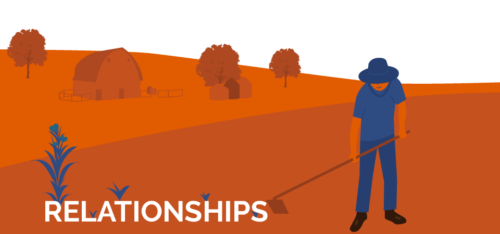As an affectionate extrovert, I probably have always been a bit predisposed to creating “micro-moments of positive connection” with others. (If you aren’t sure what the heck I’m talking about here, read the previous post in this series.) But learning that making connections with others can actually help me have an easier day made me want to make an effort to connect with people around me even more often by simply saying hello and smiling at folks I’d normally just pass by. Knowing how critical eye contact can be for connection, I now try harder to look everyone in the eye. Knowing that we best communicate warmth and connection through touch, I’m likely to touch your arm while we are talking, or to rest my hand on your shoulder just before we part. Before I read all this research, I would actually resist hugging people when I thought it more socially expected to simply shake their hand—now I usually embrace my huggy-nature and just go for it.
What science teaches us, and what I’ve learned through experience, is that the positivity resonance between me and a stranger is surprisingly similar to that within our most intimate relationships. Biologically, we have basically the same reaction, and we reap similar physiological benefits when we connect with a stranger as when we connect with our best friend. The big difference is the frequency and speed with which we have micro-moments of “positivity resonance.” With a spouse, family member, or good friend, we have these moments more quickly and more often than with an acquaintance.
Another big takeaway for me is that our most committed relationships—our marriage, relationships with our closest family members, and best friends—are continually created and reinforced in real time by repeated micro-moments of love and care. We sometimes forget that marriage is not created by the wedding and that the ceremony when we make a lifelong commitment is, in some ways, nothing more than a couple of hours of amplified love. As such, that positivity resonance, however intensely felt in the moment, will fade until those moments are re-created.
All this is to remind us what we already know (but sometimes wish wasn’t true): Relationships need cultivating and tending. As Brené Brown writes:
Love requires tenacity and grit. It’s work. It’s the most difficult thing I’ve ever done. So when people say, “Love shouldn’t be this hard,” I think, Why not? We get so much from our most important relationships—it makes sense that we have to invest a lot of time, effort, and some serious self-reflection into them.
Whether or not we experience the things we do to cultivate our relationships as work or as play probably depends on our personality and on the particular relationship. The point is that the particular behaviors and actions we take—consciously or unconsciously— enable our relationships to flourish.
Some of the work we need to do is to recognize and cultivate the right environment for our relationships. The amplification of positive emotions has a few particular preconditions. Positivity resonance can arise only when we feel safe; that is the first precondition. If our system is alarmed, if the person we are with (even if it is a “loved one”) is threatening in any way or is triggering a fight-or-flight response in us, we will not experience a synchronicity of positive emotions or the benefits of love amplified.

The second precondition for positivity resonance is a physical connection. Our bodies and brains synch up by witnessing the non-verbal cues that come with a positive emotional connection, through eye contact, through unconscious mimicry of facial expressions, through our vocal tones, and through touch. So while we may feel a profound swell of love when we receive a love note from our spouse, our love is singular. It does not resonate between us; it isn’t amplified.

And there is a third thing: We need to create connections all the time.
These micro-moments of positive connection are like all emotions: fleeting. Connection between us and another is evoked, it arises, and it fades. When we think of love, we usually think of the bonds that are created through positivity resonance. But as the Buddhists say, the finger that points to the moon is not the moon; our marriages and commitments and genuine bonds of love are not the emotion of love itself.
Micro-moments of positivity resonance are tremendous and powerful resources that can, in fact, affect our future with our beloveds. When we experience the positive connection of amplified love, it increases the odds that we will respond positively in the future to the same person. This is why we can light up when we run into an old high school friend at the supermarket, connecting quickly and easily even though it has been a decade since we last saw each other.
This post is from a series about social connections from the “Science of Finding Flow,” an online course I created as a companion to my book The Sweet Spot: How to Accomplish More by Doing Less. Want to go on to the next class or start the course from the beginning? It’s free! Just go to The Science of Finding Flow course page. Enjoy!

